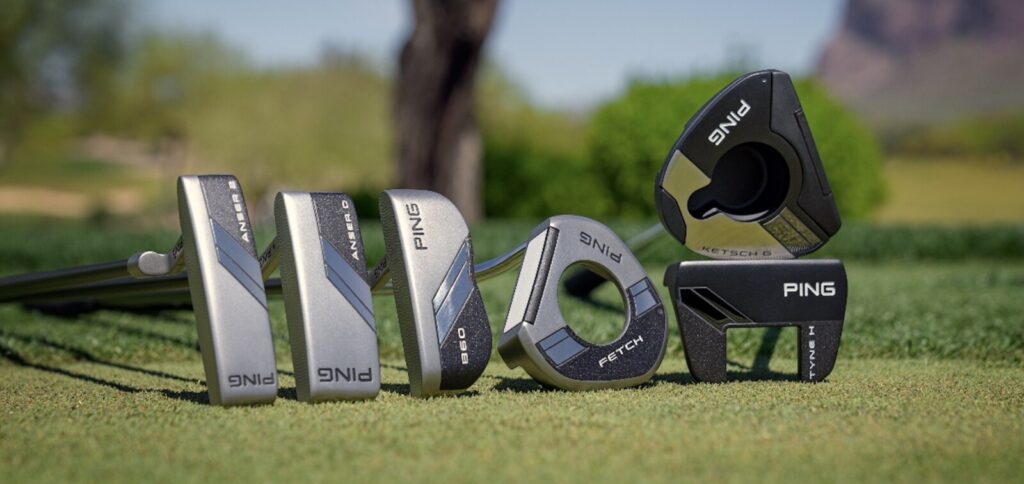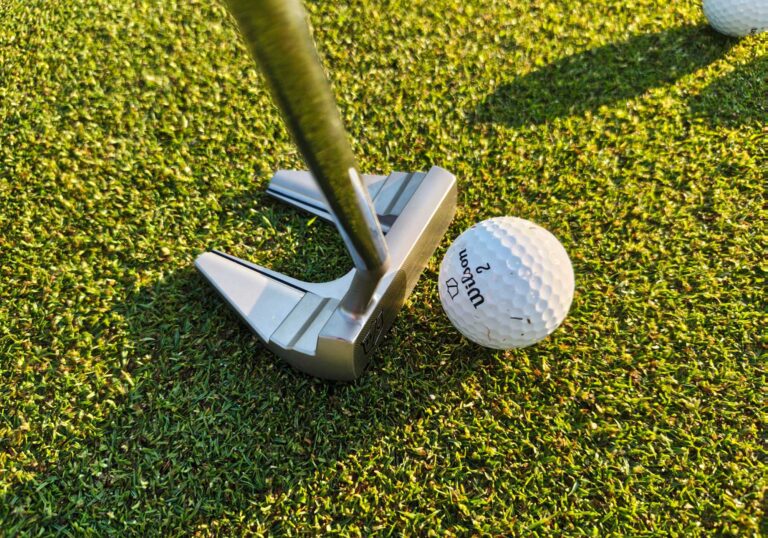If you’ve ever picked up two different putters and noticed how drastically they can feel in your hands, you’re not imagining things. Putter weight can make a big difference in your stroke, tempo, and confidence. But how do you know whether a heavy or light putter is right for you?
Let’s break it down in a way that helps you actually figure out what works best for your putting game.
Why putter weight matters
Weight influences how the putter feels during your stroke. It affects the way you swing it, the feedback you get on impact, and even how consistent your tempo feels.
There’s no universal “better” option between heavy and light putters. It’s all about finding the one that matches your natural rhythm and putting style.
Who benefits from a heavier putter?
Heavier putters typically range from 360 grams and up for the head alone. With added weight, they tend to feel more stable through impact and can smooth out jerky or wristy strokes.
You might benefit from a heavier putter if:
- You have a short, compact putting stroke
- You struggle with over-accelerating through the ball
- You play on slower greens that need a little more “oomph”
- You want more forgiveness on off-center hits
- You prefer a smooth, pendulum-style motion
Many mallet-style putters, and even some blade putters with modern weighting, fall into this heavier category. The added weight can help you stay on plane and reduce the tendency to “jab” at the ball.
Who benefits from a lighter putter?
Lighter putters generally fall in the 330 to 350 gram range for the head. These are typically preferred by players who like more feel and feedback in their hands, and who may have a longer, more flowing stroke.
You might prefer a lighter putter if:
- You have excellent feel and touch
- You play on fast greens that punish heavy-handed strokes
- You prefer to “swing” the putter rather than “push” it
- You like more feedback at impact to gauge speed control
- You come from a background in blade-style putters
Light putters can be especially effective when touch and finesse are your main focus. But they also demand more precise control of speed and path.
What about balance and tempo?
The weight of your putter isn’t just about the head, rather it’s also about how it’s distributed throughout the club. The grip, shaft, and head all influence the overall feel.
Heavier putters often promote a slower, smoother tempo, which can be ideal if you struggle with rhythm.
Lighter putters tend to encourage a quicker tempo. That’s not necessarily bad, but it requires consistency and good timing.
This is where counterbalancing (adding weight to the grip end) or fitting your putter length can really change how the weight feels and performs during your stroke.

Try it for yourself: heavy vs light
If you’re unsure what weight you like, try this side-by-side experiment on the practice green:
- Hit five putts with a heavy putter
- Hit five putts with a light putter
- Alternate every other putt for feel comparison
- Use short, medium, and long putts to test control and distance
Pay attention to which one gives you more confidence, especially in terms of speed control. Are you leaving putts short with the lighter putter? Are you blowing past the hole with the heavier one? Does one feel more natural in your hands?
Let the results guide your decision.
Putting conditions matter too
Don’t forget to factor in green speed. On faster greens, lighter putters are often easier to control since you don’t need as much energy to get the ball rolling.
On slower greens, heavier putters can help you get the ball to the hole without forcing the stroke. Some players even switch putters depending on the courses or conditions they’re playing.
Final thoughts
The debate between heavy and light putters isn’t about what’s better in general, but instead it’s about what’s better for you. That means understanding your tempo, stroke style, and the kinds of greens you usually play on.
If you’re unsure, start with a putter that falls in the middle range and make small adjustments from there. Grip weight, shaft length, and even head shape all influence how the putter feels, so it’s worth experimenting.
And if you really want to dial things in, a putter fitting can give you objective feedback to match your feel.
Let’s hear from you
Do you use a heavy or light putter? Have you tried both? What gave you more confidence and consistency on the greens? Share your experience and help others learn what might work for them too.
